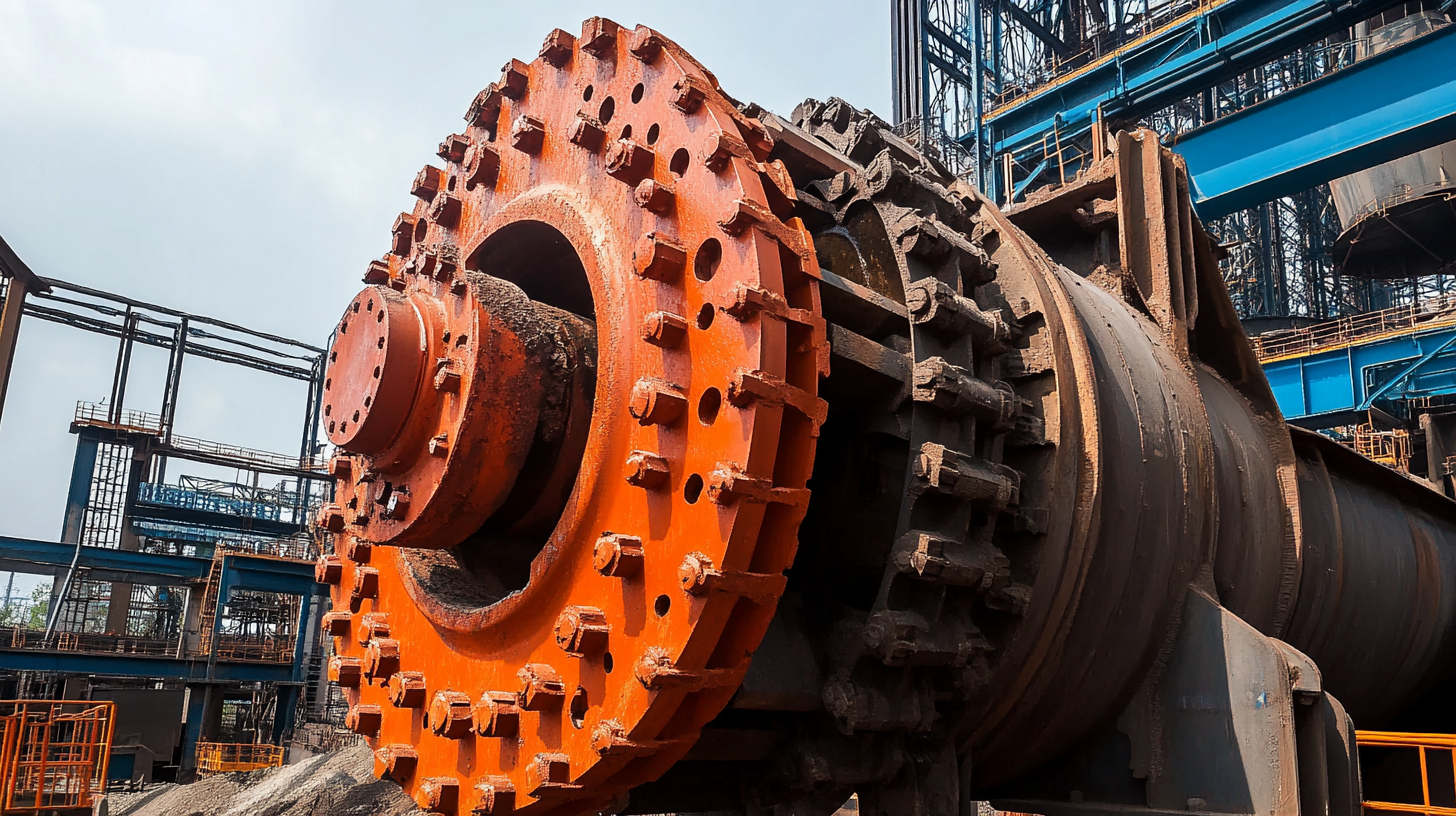
-
Home
-
About Us
-
Products
-
News
-
Blog
-
Contact Us
Leave Your Message

In today's competitive market, the impact of tariffs on international trade continues to reshape industries and challenge manufacturers. The ongoing trade tensions between China and the United States have forced businesses to rethink their strategies in the face of reciprocal tariffs. However, while some sectors struggle, others, particularly in Chinese manufacturing, are finding innovative ways to thrive. One such example is the production of Primary Gyratory Crusher Parts, where manufacturers are leveraging these tariff challenges to foster growth and expand their market presence. By focusing on improving quality, reducing costs, and enhancing customer relations, these manufacturers are not only overcoming the obstacles posed by tariffs but also positioning themselves as key players in the global supply chain. This blog will explore the strategic approaches being employed by Chinese producers to maintain and even accelerate their growth trajectory in the realm of Primary Gyratory Crusher Parts despite external pressures.

Navigating the landscape of tariff impacts on Chinese manufactured primary gyratory crusher parts has become a pivotal challenge for industry stakeholders. With the global mining and construction market expected to reach $500 billion by 2025, companies must strategize effectively to mitigate tariff-related costs. According to a recent report by Market Research Future, the demand for crushers, particularly in regions like Asia-Pacific, is projected to expand at a CAGR of over 5% from 2020 to 2026. This underscores the importance of optimizing supply chains and production processes in response to fluctuating tariffs.
To adapt to these challenges, manufacturers are increasingly focusing on localizing parts production and sourcing to minimize tariff impacts. By establishing partnerships with local suppliers and exploring alternative markets, companies can reduce reliance on imports that are subject to higher tariffs. Furthermore, investing in automation and advanced manufacturing technologies allows for cost savings and increased efficiency, which are critical in maintaining competitiveness. As the industry evolves, those who employ innovative strategies will not only navigate tariff challenges but position themselves for sustainable growth in the booming gyratory crusher parts market.
| Dimension | Data |
|---|---|
| Annual Production Volume (Units) | 10,000 |
| Average Cost per Unit ($) | 5,000 |
| Export Percentage (%) | 60 |
| Impact of Tariffs on Export ($) | 2,000,000 |
| Projected Growth Rate (%) | 15 |
| Number of Competitors | 8 |
| Average Delivery Time (Weeks) | 6 |
In the face of increasing tariff challenges, manufacturers of primary gyratory crusher parts in China are unveiling innovative strategies to maintain competitiveness. Trade barriers, particularly those imposed by major markets, have compelled companies to rethink their approaches to production, supply chain logistics, and customer engagement. According to a recent industry report by Market Research Future, the global market for mining equipment, including crusher parts, is projected to reach $100 billion by 2025. This presents an opportunity for Chinese manufacturers to adapt and thrive.
One effective strategy involves investing in advanced manufacturing technologies such as automation and 3D printing, allowing for more efficient production processes and reduced costs. Additionally, investing in research and development can lead to patented innovations in material durability and performance, setting products apart in a crowded marketplace.
**Tip:** Companies should consider forming partnerships with local distributors in key markets to enhance product visibility and exploit potential trade advantages. Another crucial aspect is continuous monitoring of tariff policies to proactively shift manufacturing or sourcing strategies, ensuring they remain agile in response to regulatory changes. By embracing these approaches, Chinese manufacturers can not only survive but also leverage tariff challenges to stimulate growth and innovation in their sector.

In the face of increasing tariff challenges, many Chinese manufacturers of primary gyratory crusher parts have found innovative ways to not only sustain their operations but also thrive. One noteworthy success story is that of a leading Chinese supplier who adapted its supply chain strategies to mitigate the impact of tariffs. By diversifying their raw material sources and investing in advanced manufacturing technologies, they have maintained competitive pricing while ensuring the highest quality standards. This flexibility has positioned them advantageously in global markets, allowing them to outmaneuver competitors who are less agile in their operations.
Another compelling example comes from a manufacturer that leveraged a strong domestic market presence to offset losses from international tariffs. By ramping up their production for local industries, such as mining and construction, they effectively absorbed the pressures of devalued export opportunities. This pivot not only stabilized revenue streams but also enabled them to reinvest in research and development, further enhancing their product range. These stories illustrate the resilience of Chinese manufacturers as they navigate tariff challenges, showcasing their ability to adapt and innovate, ensuring long-term growth despite external pressures.
This bar chart illustrates the annual growth percentage of Chinese manufacturers of primary gyratory crusher parts over the last five years, showcasing their resilience and adaptability in the face of tariff challenges imposed by various countries.
The manufacturing of primary gyratory crusher parts in China has witnessed significant advancements, largely driven by technological innovations. As industries strive to enhance productivity and efficiency, the integration of advanced manufacturing technologies has become a crucial focal point. Automation and robotics in production lines not only streamline operations but also ensure precision and consistency in the parts manufactured. This technological shift allows manufacturers to respond swiftly to market demands while maintaining high-quality standards.
Moreover, the implementation of data analytics and artificial intelligence (AI) in the manufacturing process has revolutionized the way gyratory crusher parts are designed and produced. By utilizing predictive maintenance, manufacturers can anticipate machinery failures before they occur, reducing downtime and operational costs. Additionally, AI-driven design processes enable the creation of optimized components that enhance the performance of gyratory crushers, ultimately contributing to greater operational efficiency in mining and construction industries. These technological advancements position Chinese manufacturers at the forefront of the global market, fostering growth even amidst tariff challenges.
The landscape of global trade and manufacturing is constantly evolving, influenced by factors such as tariff challenges and geopolitical shifts. As reported by the International Trade Centre, in 2022, the global manufacturing output bounced back to $40 trillion, underscoring the resilience of the sector. However, these changes also pose challenges for manufacturers in specific industries, particularly in sectors heavily reliant on international supply chains like primary gyratory crusher parts. Manufacturers are now facing increased tariffs and trade barriers, but this scenario also opens avenues for innovation and local sourcing.
Looking ahead, the projection by McKinsey & Company indicates that by 2025, 30% of manufacturing companies may relocate parts of their supply chains closer to their markets to mitigate tariff risks. This trend is especially crucial for Chinese manufacturers of gyratory crusher parts, as they explore strategies to enhance competitiveness. Focusing on technological advancements and sustainable practices might not only help in overcoming tariff challenges but also cater to the rising demand for high-quality, locally produced components in developing regions. As global trade dynamics shift, those who adapt swiftly will not only survive but thrive in this intricate ecosystem.
